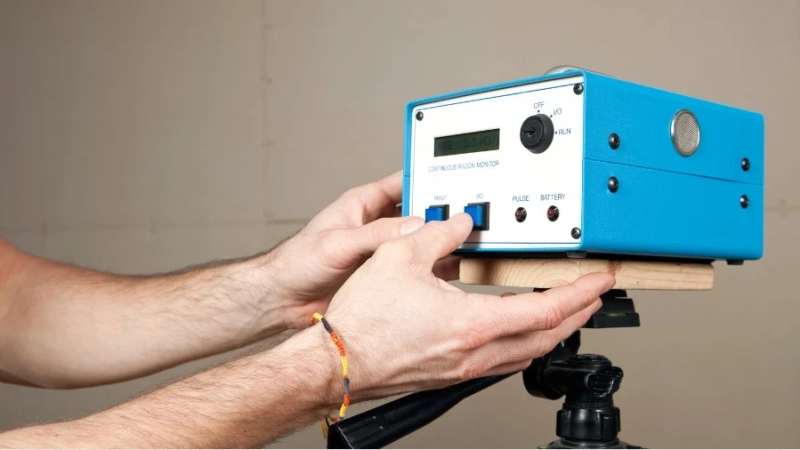Radon is a silent, invisible threat that many homeowners are unaware of. This naturally occurring radioactive gas can seep into homes and pose serious health risks if not properly managed. In this comprehensive guide, we will delve into radon awareness, understanding the dangers it presents, and exploring effective mitigation strategies to protect your loved ones.
What is Radon?
Radon is a colorless, odorless radioactive gas that forms naturally from the decay of uranium in soil, rock, and water. It can enter homes through cracks in floors, walls, and foundations. Once inside, it can accumulate to dangerous levels, posing significant health risks.
The Health Risks of Radon Exposure
Radon is the second leading cause of lung cancer after smoking, according to the Environmental Protection Agency (EPA). Prolonged exposure to high levels of radon can lead to lung cancer, making it crucial to be aware of the radon levels in your home and take necessary steps to mitigate its presence.
How Radon Enters Your Home
Understanding how radon enters your home is the first step in radon mitigation. Radon can seep through:
- Cracks in solid floors
- Construction joints
- Cracks in walls
- Gaps in suspended floors
- Gaps around service pipes
- Cavities inside walls
- The water supply
Testing for Radon
Testing is the only way to determine if your home has a radon problem. There are two main types of radon tests:
- Short-term tests: These remain in your home for 2 to 90 days, providing quick results.
- Long-term tests: These remain in your home for more than 90 days, giving a more accurate picture of your home\'s year-round radon levels.
DIY radon test kits are available online and in hardware stores, or you can hire a professional to conduct the test for you.
Interpreting Radon Test Results
Radon levels are measured in picocuries per liter (pCi/L). The EPA recommends taking action if your home\'s radon level is 4 pCi/L or higher. Even levels between 2 and 4 pCi/L can pose a risk and may warrant mitigation efforts.
Proven Radon Mitigation Strategies
If your home has elevated radon levels, several proven mitigation strategies can reduce radon exposure:
1. Sub-Slab Depressurization
This is the most common and effective radon reduction method. It involves installing a vent pipe system and fan to pull radon from beneath the house and vent it to the outside. This method can reduce radon levels by up to 99%.
2. Sealing Cracks and Openings
Sealing cracks and openings in your home\'s foundation can help limit the entry of radon. While this is not a standalone solution, it can enhance the effectiveness of other radon mitigation systems.
3. Home Pressurization
This method uses a fan to blow air into the basement or living area from either upstairs or outside, creating enough pressure at the lowest level to prevent radon from entering the home.
4. Improving Home Ventilation
Increasing ventilation by opening windows and using fans can help reduce radon levels. Ventilation can be part of a temporary solution while more permanent mitigation measures are implemented.
5. Installing a Radon Sump System
For homes with basements, a radon sump system can be highly effective. This involves creating a sump in the floor and using a fan to draw out the radon-laden air.
Radon-Resistant New Construction
If you\'re building a new home, consider incorporating radon-resistant features during construction. These can include gas-permeable layers, plastic sheeting, sealing and caulking, and vent pipes. Building radon-resistant homes from the start is often more cost-effective than retrofitting mitigation systems later.
Maintaining Your Radon Mitigation System
Regular maintenance of your radon mitigation system is crucial to ensure it continues to operate effectively. This includes:
- Checking the system\'s warning device to ensure it is functioning properly.
- Inspecting the vent fan to confirm it is working.
- Ensuring any sealed cracks remain intact.
The Role of Professional Radon Mitigators
While DIY mitigation can be effective, hiring a professional radon mitigator is often the best approach. Certified professionals have the experience and tools to ensure your mitigation system is installed correctly and efficiently. Look for certified mitigators through organizations such as the National Radon Proficiency Program (NRPP) or the National Radon Safety Board (NRSB).
Radon in Water
Radon can also be present in water, particularly if your water supply comes from a well. While less common than airborne radon, it can still pose a risk. Treatment methods include granular activated carbon (GAC) filters and aeration systems to remove radon from water before it enters your home.
Government Guidelines and Support
Various government bodies provide guidelines and support for radon testing and mitigation. The EPA offers resources and recommendations, while many states have radon programs that offer testing kits, information, and financial assistance for mitigation efforts.
Raising Radon Awareness
Raising awareness about radon is essential to ensuring more people take action to protect their homes and health. This includes:
- Educating yourself and your family about the dangers of radon.
- Sharing information with neighbors and friends.
- Participating in local radon awareness campaigns.
- Supporting legislation and policies that promote radon testing and mitigation.
Conclusion
Radon is a serious health hazard that can affect any home. By understanding the risks and taking proactive steps to test for and mitigate radon, you can protect your loved ones from this invisible threat. Whether through DIY testing, professional mitigation, or incorporating radon-resistant features in new construction, there are numerous ways to reduce radon levels and ensure a safer living environment. Stay informed, stay proactive, and prioritize the health and safety of your home.



